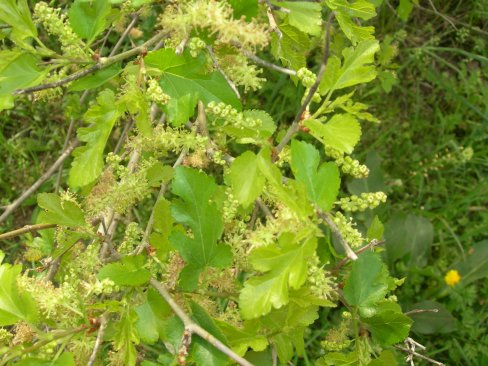We are having a blast with the Spring challenges from the Handbook of Nature Study! Our most recent study involved taking a walk together looking for the things on the Spring Nature Walk Senses Scavenger Hunt. It got our observation juices flowing as we were using all of our senses to discover signs 0f spring. We found wildflowers, wild onions, maple keys (a.k.a. helicopters), birds, bees, and lilacs just to name a few.
You think you know something about something because you are familiar with it, but when you look closer and dig deeper, you realize there is so much more to know. That was the way it was for us this week when we studied the trees in our backyard. We can identify them, play near them, rake their leaves and use their shade, but we had never watched them come back to life in the spring. Because of the mild weather, the trees on the prairie have budded and blossomed very early this year so we also studied them on our walk. We have noticed so many new things about trees:
- Some trees blossom before they leaf out.
- Some trees just have buds that turn into leaves.
- Some trees have catkins which are slim, cylindrical, drooping flower clusters.
- Some trees have a combination of buds, catkins, and flowers.
The eastern redbud tree is a beautiful bloomer in our area and has wonderful heart shaped leaves later on.
The sugar maple in our front yard has beautiful buds that develop into leaves.
We also found a mulberry catkin to bring home for further investigation.
One of our favorite trees was the willow tree in our neighbor’s yard. The catkins are furry and soft and remind you of the Dutch meaning for catkin, kitten. You can see the different stages the catkins are in. Some are leafing out, some are full of yellow pollen, and some are still in the furry stage. 
We even used our fingerprints to make a craft version of the “pussy” willow branches.
The more I learn and read with the children, the more I am reminded how much vocabulary, connotation, point of reference and language in our everyday lives comes from studying nature and its processes. You are marvelous indeed, O Lord!




I can smell the lilac bush from here 🙂
I couldn’t agree with you more…everything little thing we observe in nature comes from a loving and creative Father. We just need to slow down and take note and I know that nature study for homeschoolers has become the vehicle of so many wonderful learning experiences.
What a beautiful entry! Thank you so much for sharing your observations and your thoughts with the OHC Blog Carnival.
I love catkins from willow trees, they are so pretty.